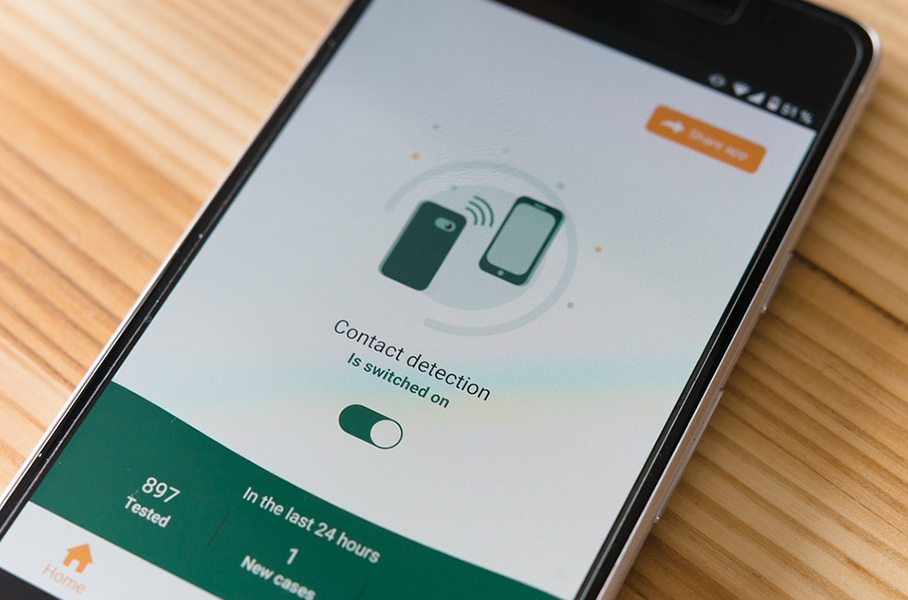
2021 was an equalizer when it came to cloud outages. At one point or the other, we saw many cloud services grind to a halt. That led our favorite apps, social media sites, and home management systems to crumble. Even tech giants succumbed! We also saw cloud-backed apps and websites crash. These collapses caused inevitable consequences with some being detrimental when working from home.
In this article, we’ll see the top 7 cloud outages from 2021 and how they affected the world. First, let’s get a closer look at what cloud services are and who controls them.
Cloud Services
Cloud services are storage alternatives to local computers or servers. They give access to networking, storage, security and development tools, and applications over the internet.
Anyone can use them for personal or business purposes like the case with Google Drive. Businesses also might use Google or other cloud services to offer streaming, e-commerce, and more. Amazon Web Service, for example, supports the world’s largest e-commerce website, Amazon.com. Many organizations also can run their applications on these cloud vendor platforms.
We use cloud services in our daily lives, including when connecting with family and friends, ordering delivery, or for COVID contact tracing! Imagine life without cloud services: no more chats, video calls, or social media posts!
Though cloud services are useful, it’s alarming how much the providers control.
Who Controls Cloud Services?
Large cloud vendors like AWS, Azure, and Google Cloud control and provide cloud services. Synergie Research Group found these three providers controlled 61% of the market in 2020.

This gives you a sign of why outages are having such a widespread impact.
Cloud Outages, Then and Now
Cloud outages were simpler in the past. Infrastructure was in an in-house data center, resulting in more failure visibility. Today, when a cloud vendor service goes down, we can’t see into the issue. We can’t know why this happened and when the service will be up again. It also has a wider reach than your personal business or company.
Let’s take a look at 7 of the messiest, most staggering, and shocking episodes from cloud outages in 2021.
Top 7 Cloud Outages in 2021
1. When Amazon Paused the World-Wide-Web
Amazon Web Services (AWS) has had its fair share of cloud outages in the past, with 2021 scheduling more than 27 outages. What’s more, in the countdown to the holidays, AWS had two major outages.
Many online services use AWS’s cloud services. That’s why, when AWS collapsed it affected a host of websites and apps, not only the Amazon website and Prime Video. Even big names weren’t immune, as the outage struck websites like Netflix, IMDb, and more.
AWS attributed the outage to a large connection activity surge, which overwhelmed networking devices. This resulted in delays and latency between the internal AWS networks, which had ripple effects on customer apps. This caused traffic delays or site shutdowns worldwide for about 7 hours.
Many things came to a pause, from automatic cat feeders to scheduled jobs for iRobot, even navigation maps on delivery apps!
2. The Social Connection Outage
Imagine billions across the world stuck without a way to communicate? That’s what happened to WhatsApp users who had to stay estranged for 6 hours. Facebook attributed the six-hour-long cloud outage to faulty configuration changes on the backbone routers.
That said, cloud researchers have pointed out that the downtime’s cause was issues relating to a Border Gateway Protocol (BGP). This fault made Facebook accidentally shut down its cloud services. That brought down its online services and ensured no one, not even its own employees, could log into Facebook and its app family. That’s why Instagram and WhatsApp shut down, too. The outage cascaded to any site and service relying on Facebook logins, Meta’s servers, and tokens.

3. Google Assistant Refuses to Assist
In February 2021, Google Assistant suddenly stopped working. The assistant couldn’t process questions and scheduled programs. The outage made it impossible to connect to Google Home devices, from smart lights to home security tech. The outage seemingly affected all Google Home users, many of whom resorted to Reddit and other support forums for assistance. Google fixed the issue right after it became widespread.
4. Google Cloud Network Results in a 404 Error
Google Cloud went down in mid-November, taking services like Home Depot, Snapchat, Etsy, Discord, and Spotify down with it. The sites went offline and popped “404” errors when users tried to access them. A glitch in a network configuration caused the outage.
The two-hour-long disruption apparently stemmed from a configuration change to Google cloud services’ balancing load. This isn’t the first time an outage has hit Google Cloud, and it likely won’t be the last.
5. PSN outages for PS5: 4 in 1 Year!
It’s been a messy year for Sony and CDN Akamai Technologies. They had several cloud outages throughout 2021. The worst one locked out some PS5 and PS4 players from their online gaming library for 2+ days. Players also had issues launching other services like YouTube and Netflix, which is why it can be a good idea to save your favorite content for offline use with a YouTube to mp3 converter.
Some outages happened after severe disruptions at Akamai. Others depended on an AWS outage that brought the PlayStation Network down in December 2021, along with other major websites and services.
6. Microsoft Teams Meetings Wouldn’t Let You Join
Last year, Microsoft’s Teams meetings were ever-present, but users experienced infrequent but annoying outages. During the first cloud outage, you couldn’t join meetings or live events. Later, networking issues delayed chat messages.
7. Android Exposure Notifications Glitches NHS COVID App
Timeliness is key to preventing catching and spreading Covid-19. Many NHS COVID-19 app users were stuck on a loading screen without the data they were looking for. This glitch was due to issues with Google’s Android Exposure Notifications System.
Google took about a day and a half to resolve the issue. The NHS app has previously suffered problems since in 2020 people would receive phantom notifications of Covid-19 exposure.

These cloud outages raise many questions. Do we depend too much on one provider? Do devices that depend on the cloud need to incorporate offline controls for emergencies like this? Google Cloud’s outages are one scenario that shows the riskiness of depending on a single provider without a contingency plan.
All these outages, and many others, highlight the cloud services’ fragility. Our internet use is in the hands of major cloud providers and that’s why a single catastrophe can sabotage our productivity. It can even make our expensive technology useless.
That said, what should be our game plan for a less messy 2022?
Outages 2022: What Can We Learn from 2021?
Cloud outages are inevitable. The key, though, is to prevent single failure points and have a backup for every important component that can potentially fail.
Companies, like Facebook, have cutting-edge technology systems. Still, that doesn’t mean they can’t fall prey to tech complexity and unintended failures. That’s why providers need to invest more in cloud infrastructure. That’s especially useful since 2021’s worst outages happened due to internal reasons, not external ones. Gartner predicts a 21.7% increase in end-user spending on cloud services in 2022, hopefully enabling the changes required.
What’s more, businesses need a contingency plan to mitigate any cloud outages. Since a single node can overturn an entire system, a backup plan would kick in until the fault is resolved.
The other critical step would be to add offline support and functionality for cloud-dependent technology services for seamless service in case of an outage.
Here are 3 things you can do to mitigate the risk from outages:
- Have a backup cloud service: If your primary cloud service has an outage, you can switch to your backup.
- Secure offline functionality for devices and apps: That means your essential features would remain functional even without connectivity.
- Set clear protocols to follow in the case of an outage: That helps you avoid wasting time in planning and assessing what to do.
The Bottom Line
Organizations that care about their end-users and application availability need to take outages seriously. While outages are sometimes inevitable, businesses can still continue without interruptions. Providers need to ramp up their cloud infrastructure control. Service users should plan ahead and take the appropriate remedial actions.
FAQ
What’s a cloud outage?
A cloud outage is when a cloud vendor’s servers or services are unavailable. This could happen for many reasons. It could be denial of service (DoS) attacks, or resource mismanagement. Cloud outages are rare, but they happen. That’s why you’ll need to plan your operations to cater for them.
What are the disadvantages of cloud computing?
When an outage occurs, you’re tied to the cloud vendor. Your outage will have to wait for your cloud vendor to fix things before you’re back online. The fix is out of your hands, and you could be facing the issue for a few minutes or even days.
What started cloud computing?
Cloud computing was first designed to help companies outsource their existing infrastructure. The idea was simple: a company provides a remote service, so it could leverage both economies of scale. That would also reduce their onsite footprint. Data would be professionally curated, ensuring a data-loss free process.
What’s the best way to mitigate cloud outages?
Always have a backup cloud service for when an outage occurs with your main cloud. You could also adopt hybrid cloud and multi-cloud approaches to address this issue. These are becoming more popular. This approach also reduces the risk of client data-leaks or theft of valuable intellectual property.
What’s the best way to migrate data to the cloud?
For some smaller companies, data transfer can occur across the web. Unfortunately, many companies have substantial data sizes that need another process. Amazon came up with the idea of hosting servers in a shipping container and driving these to a client’s site. Data is then transferred by hardline to and from the mobile servers.
Resources
AWS Service Health Dashboard
Get the latest information on the AWS service’s uptime here.
DownDetector
Track when major web services go down using the DownDetector.
TechGenix Website
Visit the TechGenix website for more trending technology news.



